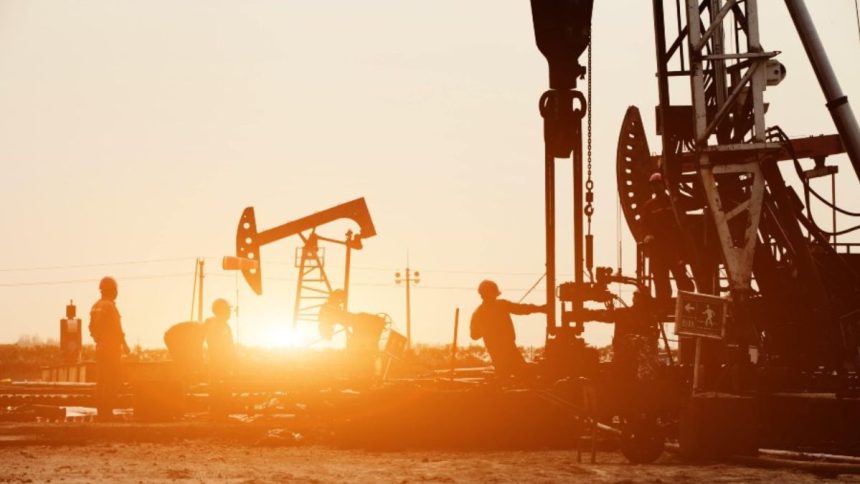Oilfield jobs offer good pay and steady work, but they also come with serious risks that can lead to injuries or even fatalities.
From towering rigs to high-pressure systems and toxic chemicals, the oil and gas industry is one of the most hazardous fields for workers. Many people wonder, how dangerous is working on an oil rig, and the answer often surprises those outside the industry.
Understanding why oilfield jobs carry such high injury rates is crucial for workers, employers, and families alike.
Are you considering a career in the oilfield, or do you have loved ones already working in this industry? We’ll explore the key hazards oilfield workers face every day, the types of injuries that occur, and essential safety measures that can help reduce the risks.
Heavy Machinery That Doesn’t Forgive Mistakes
Oilfields are filled with incredibly powerful machines, including drilling rigs, cranes, and hydraulic systems that operate under enormous pressure and force. Moving parts, high torque, and heavy loads mean one slip or equipment malfunction can cause serious injuries like crushed limbs, amputations, or fatal accidents that happen in an instant.
Regular maintenance, proper lockout/tagout procedures, and strict safety protocols are essential to keep workers safe around this equipment. Workers should always stay alert, follow their training religiously, and wear appropriate protective gear without exception. The machinery doesn’t care if you’re having an off day or got distracted for just a second.
When Fire and Explosions Turn Deadly
Oil and gas are highly flammable substances, and even a small spark can trigger catastrophic fires or explosions that can be heard for miles. Blowouts, gas leaks, and equipment failures can release combustible materials, putting workers in immediate danger with little warning.
Strict hot work protocols, gas detection systems, and emergency shut-off valves help prevent fires and explosions, but the risk is always there. Workers should be trained to recognize hazards quickly, evacuate without hesitation, and follow emergency response plans to minimize injuries during such events. When something goes wrong with flammable materials, there’s often no second chance to get it right.
Toxic Exposure That Builds Up Over Time
Oilfield workers frequently handle or encounter hazardous substances like hydrogen sulfide, drilling fluids, and volatile organic compounds that can cause both immediate and long-term health problems. Inhaling toxic gases or getting skin contact with chemicals can cause chemical burns, severe respiratory issues, or long-term health problems that might not show up for years.
Proper ventilation, consistent use of personal protective equipment, and regular gas monitoring are critical to reducing exposure risks. Workers should know the symptoms of toxic exposure and seek medical help immediately if they feel unwell on the job. Don’t tough it out when it comes to chemical exposure, the consequences can be permanent.
Fatigue: The Silent Killer
Oilfield jobs often involve brutally long hours, physically demanding tasks, and remote work locations that can wear down even the toughest workers. Fatigue can lead to lapses in judgment, slower reaction times, and significantly higher chances of accidents when you’re working around dangerous equipment.
Employers should enforce mandatory rest periods and avoid scheduling excessively long shifts, but workers also need to take responsibility. You can help protect yourself by getting adequate sleep, staying hydrated, and speaking up if you’re too tired to work safely. Your pride isn’t worth your life or someone else’s.
Falls That Can End Everything
Working on oil rigs frequently requires tasks performed at significant heights on platforms, scaffolding, and ladders that pose serious fall hazards. A single misstep can result in broken bones, spinal injuries, or fatalities that leave families devastated.
To prevent falls, workers should use fall protection harnesses every time, maintain clean walkways, and follow established safety procedures for working at heights without taking shortcuts. Regular equipment inspections and ongoing safety training help reduce the risk of these life-threatening incidents. Height doesn’t care how experienced you are.
The Reality of High-Risk Work
The combination of these hazards creates a perfect storm for injuries. Unlike office jobs where the worst thing that might happen is a paper cut, oilfield work involves multiple serious risks happening simultaneously. Workers are dealing with heavy machinery while managing toxic chemicals at dangerous heights, often while fatigued from long shifts.
The remote locations of many oilfield operations also mean that when accidents happen, medical help might be far away. This distance can turn a serious injury into a fatal one simply because emergency responders can’t reach the site quickly enough.
Making Dangerous Work Safer
Oilfield work is undeniably dangerous, but understanding why injury rates are so high can help reduce the risks. From heavy machinery and toxic chemicals to long shifts and fall hazards, oilfield jobs demand constant vigilance and strict safety protocols that can’t be ignored or taken lightly.
The reality is that while the industry offers rewarding careers with good pay, it also requires deep respect for the hazards involved. With proper training, protective measures, and a strong safety culture where everyone looks out for each other, it’s possible to make oilfield work safer for everyone on the job.
Lynn Martelli is an editor at Readability. She received her MFA in Creative Writing from Antioch University and has worked as an editor for over 10 years. Lynn has edited a wide variety of books, including fiction, non-fiction, memoirs, and more. In her free time, Lynn enjoys reading, writing, and spending time with her family and friends.















